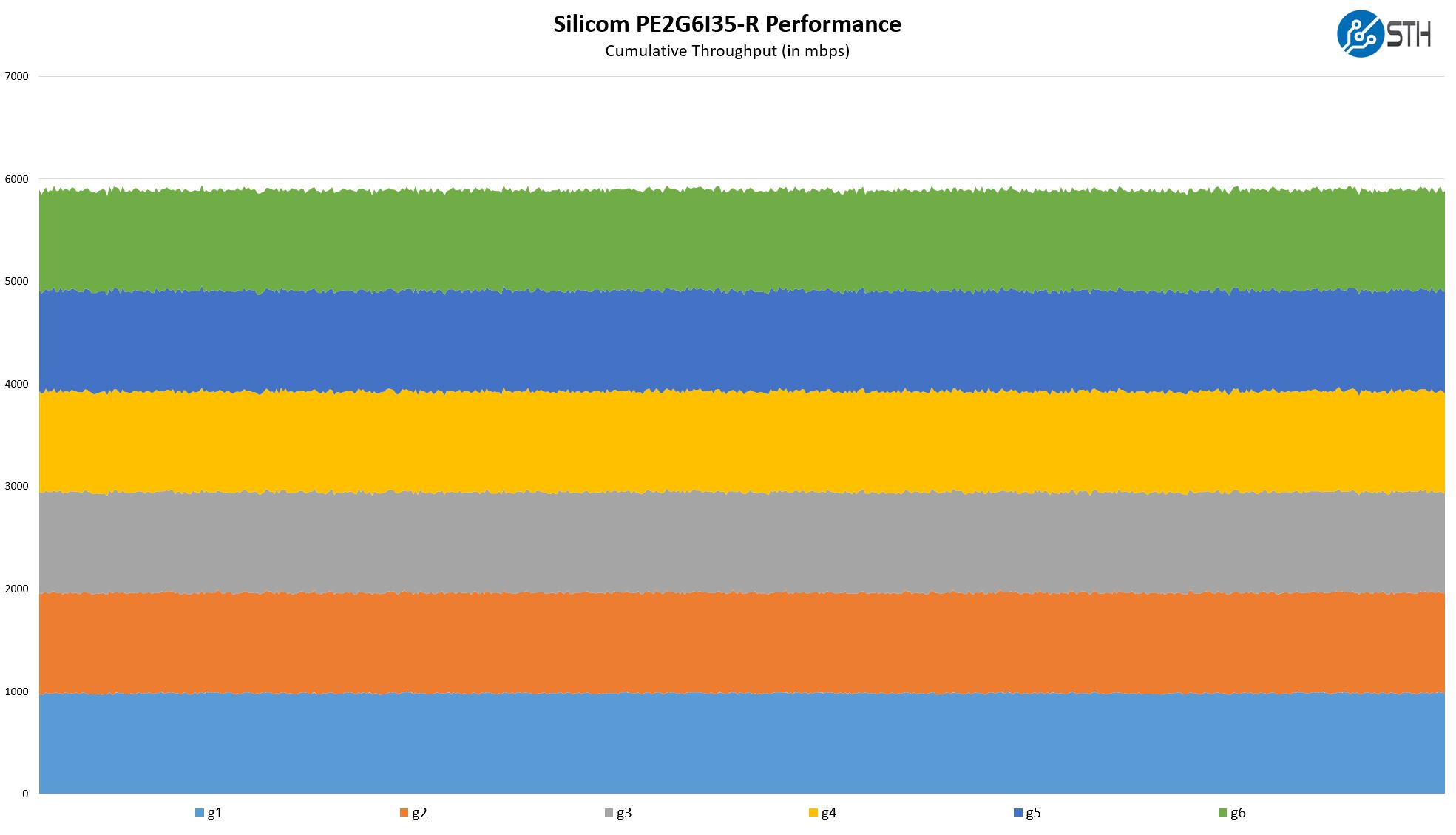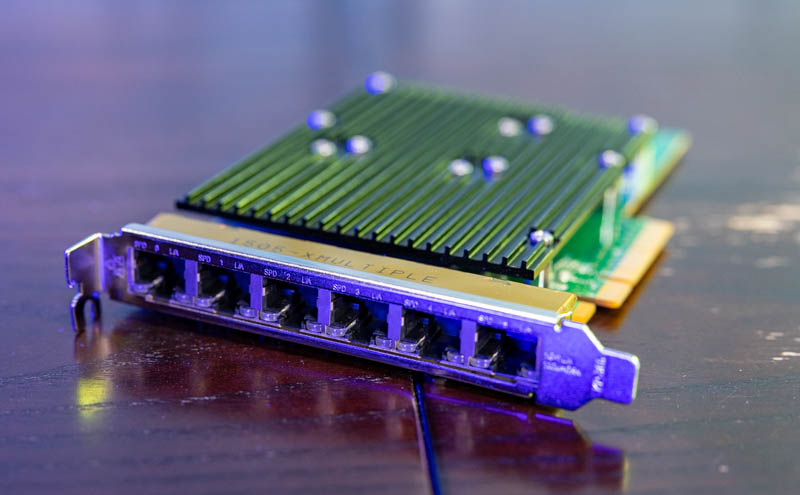Silicom PE2G6I35-R Performance
Overall, this is a 1GbE NIC with six Intel i350 ports onboard. We just tested this card to see that we could get the performance we need.

This is what we would expect. If you are worried about the PCIe connectivity, this is a PCIe Gen2 x8 card with a PCIe switch. The PCIe switch adds very little latency and a PCIe Gen2 x8 slot is capable of handling much more bandwidth than 6Gbps.
Silicom PE2G6I35-R Power Consumption
Since these will be deployed in many edge locations, we wanted to discuss the power consumption briefly. The official specs are:
- 6.84W idle without links
- 10.2W typical with all ports at 1000Mbps
In our testing, we saw between 7-10W so the spec sheet numbers seen very reasonable. This is certainly more than we would expect from a standard Intel i350-am4 quad-port NIC, but there are more ports, and a few extra watts to consolidate two cards into a single card is worthwhile.

When we discussed the heatsink design and this being a low power card, our sense is that Silicom has more than ample cooling for a board using around 10W. We can imagine other lower-end vendors making something like this but without the elaborate cooler.
Final Words
To do this review, I actually borrowed a card that was set for the STH hosting environment. These days I am not overly interested in 1GbE cards like this. I prefer to get bigger pipes if possible. Still, I recognize and understand the use-case for a card like this. If you have to do 1GbE, and you need five or six ports, it can be advantageous to use a card like this versus two cards that take up two slots.

Overall, personally, I would look to just using a 10GbE/ 25GbE NIC if you are in search of raw bandwidth. Those are a more efficient use of PCIe bandwidth and lanes and provide more network bandwidth per slot. Still, for use cases like in the STH lab where they are being used for very specific 1GbE links and the 1GbE physical links are being used for ease of remote hands service, I completely understand the use case for something like this. It is fun to see that when I looked in the STH back-end I found what was a predecessor card being used at STH in 2012 (see page 2 if you missed that.)
While this solution may not be for everyone, we know we have many readers that build small 1U firewall/ VPN appliances with limited slots where something like this card may be useful.




Silicom NICs and the ones from Interface Masters are high quality products, and if you dont need the Boot-ROM functionality, they are a reliable replacement for Intel original NICs.
Plus there are Models with SFP-cages which can accept a 1000Base-BX BiDi Module for FTTH scenarios (they are not finicky with transceivers.. MSA standard), this way you can directly plug the fiber to the Endpoint or Firewall/Routing Appliance.
What’s the point of this card these days?
I wish this was a gen3 x4 card instead of gen2 x8.